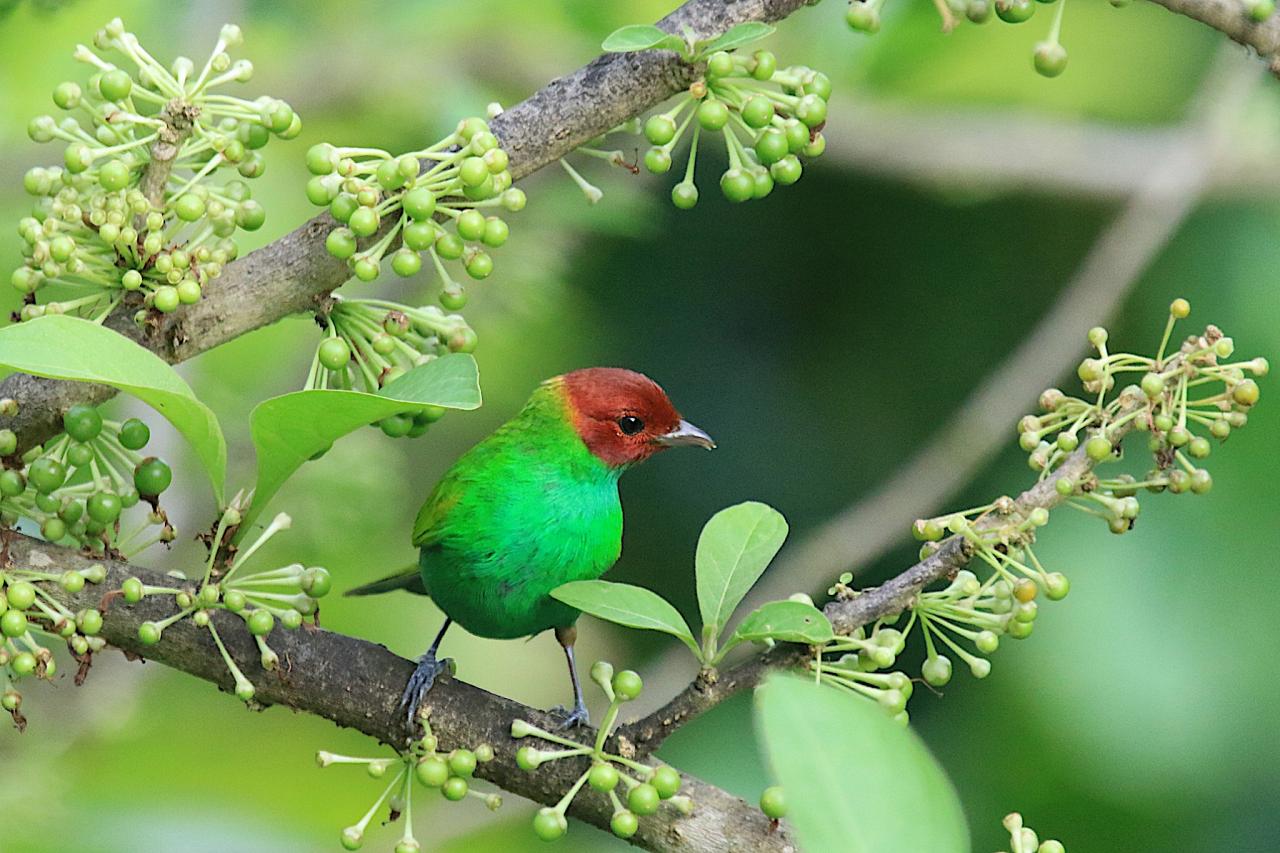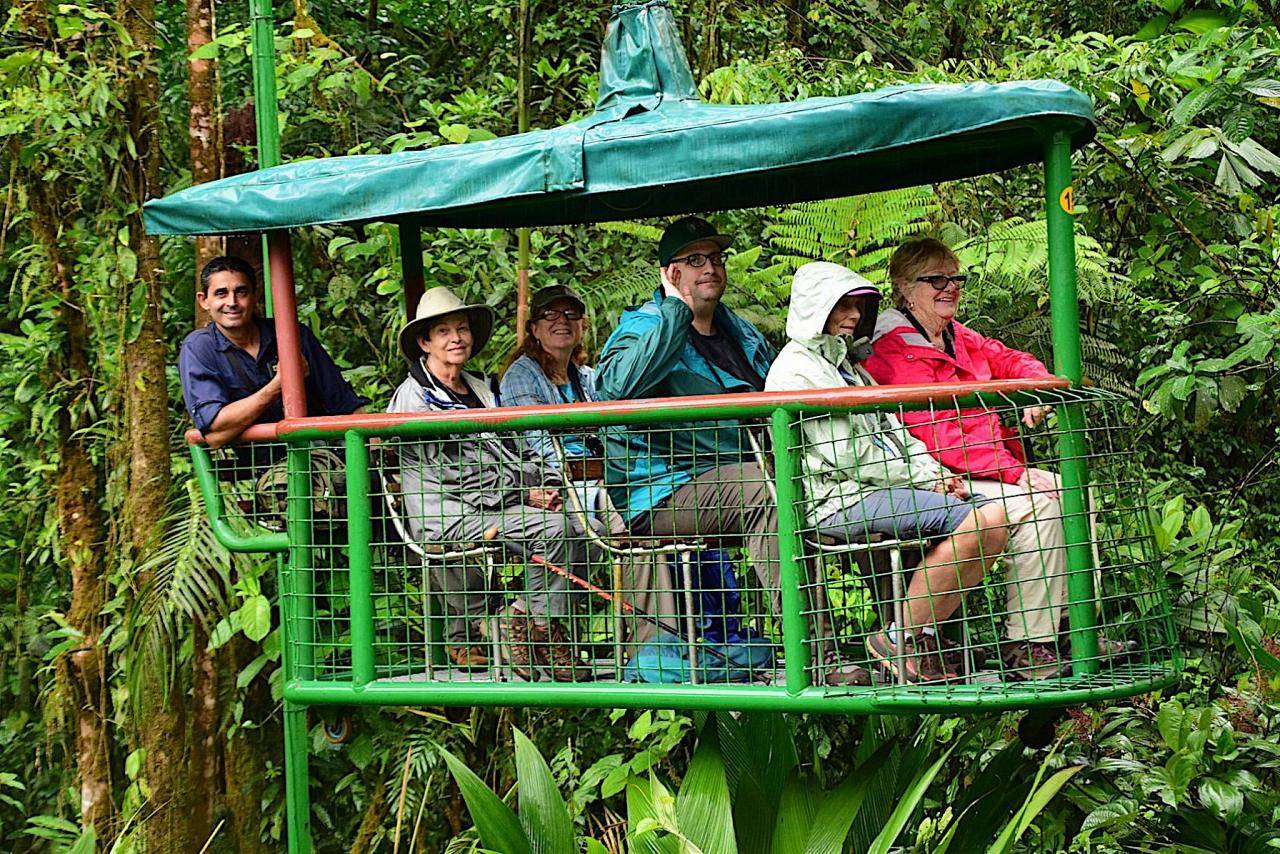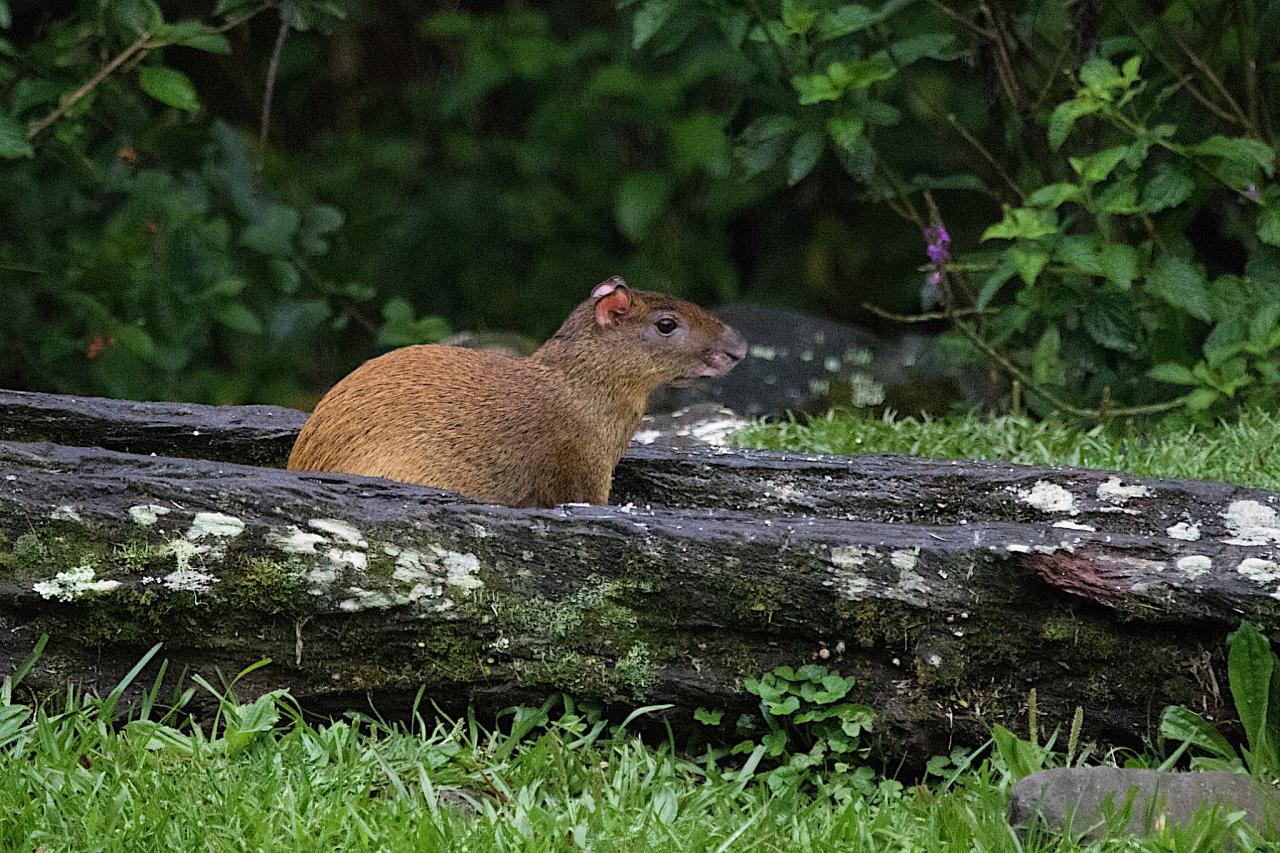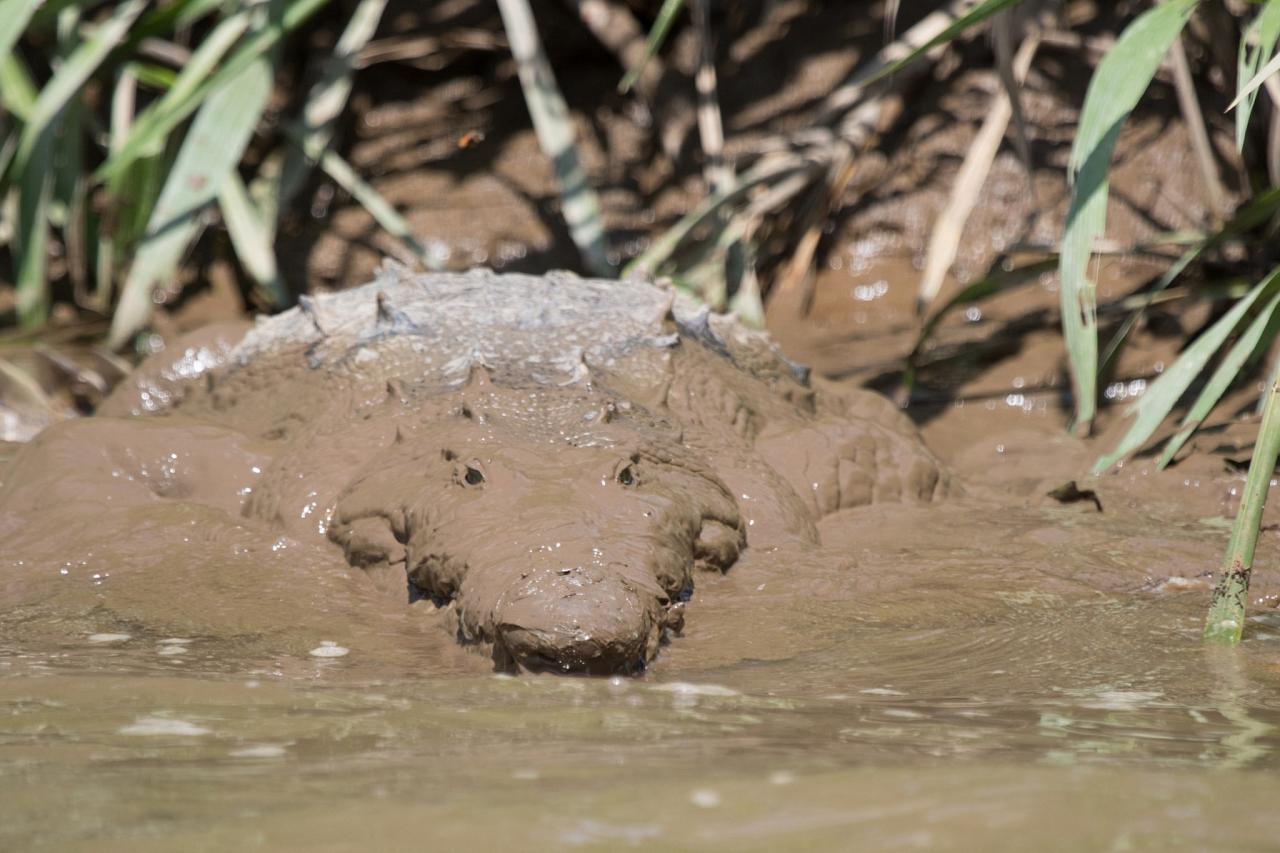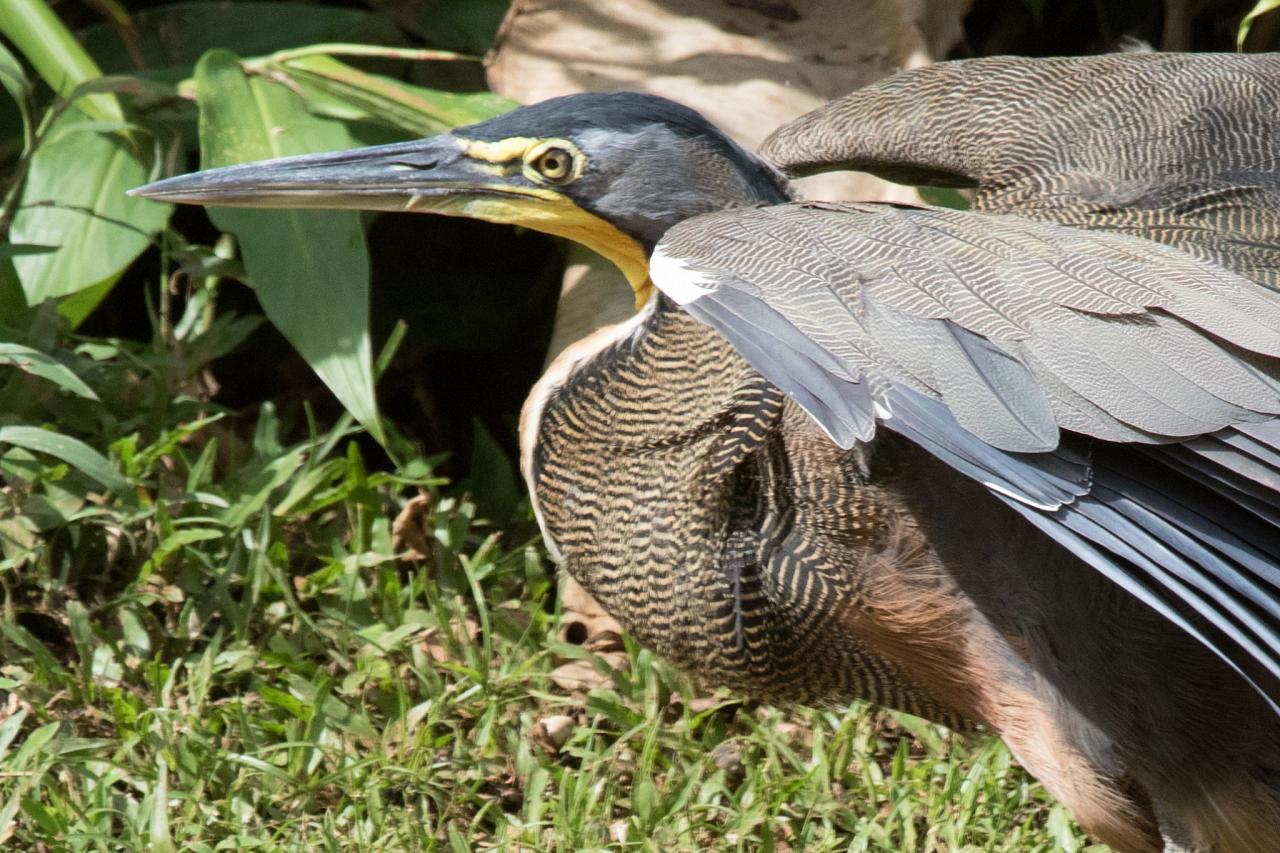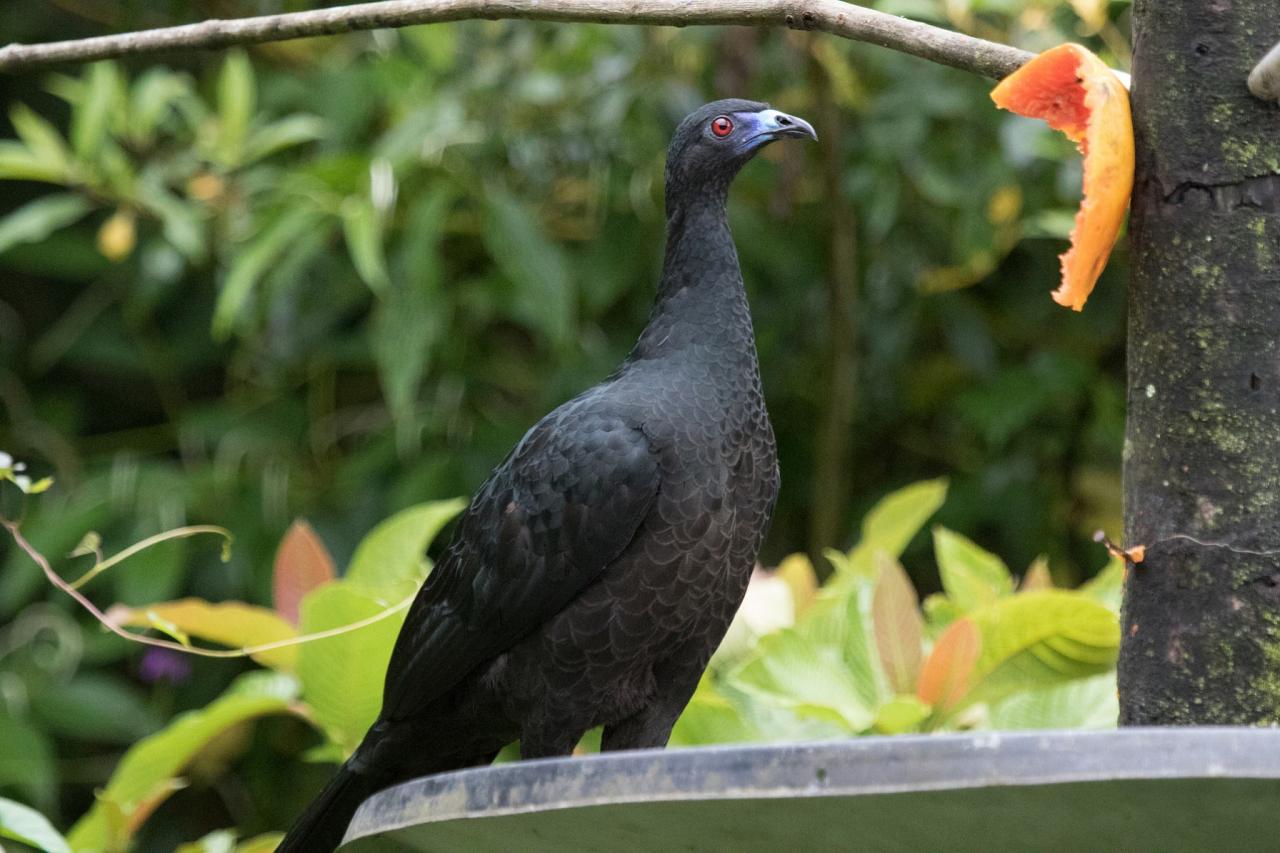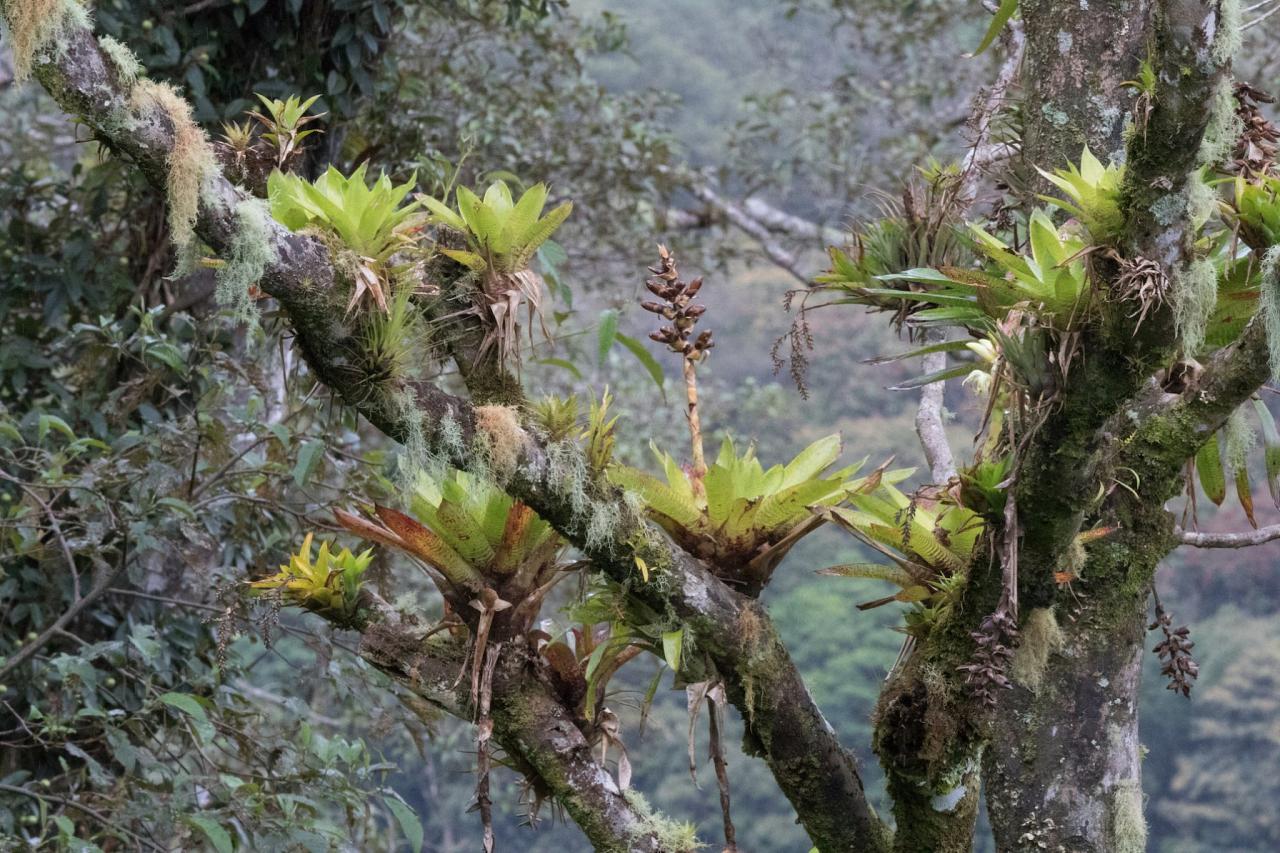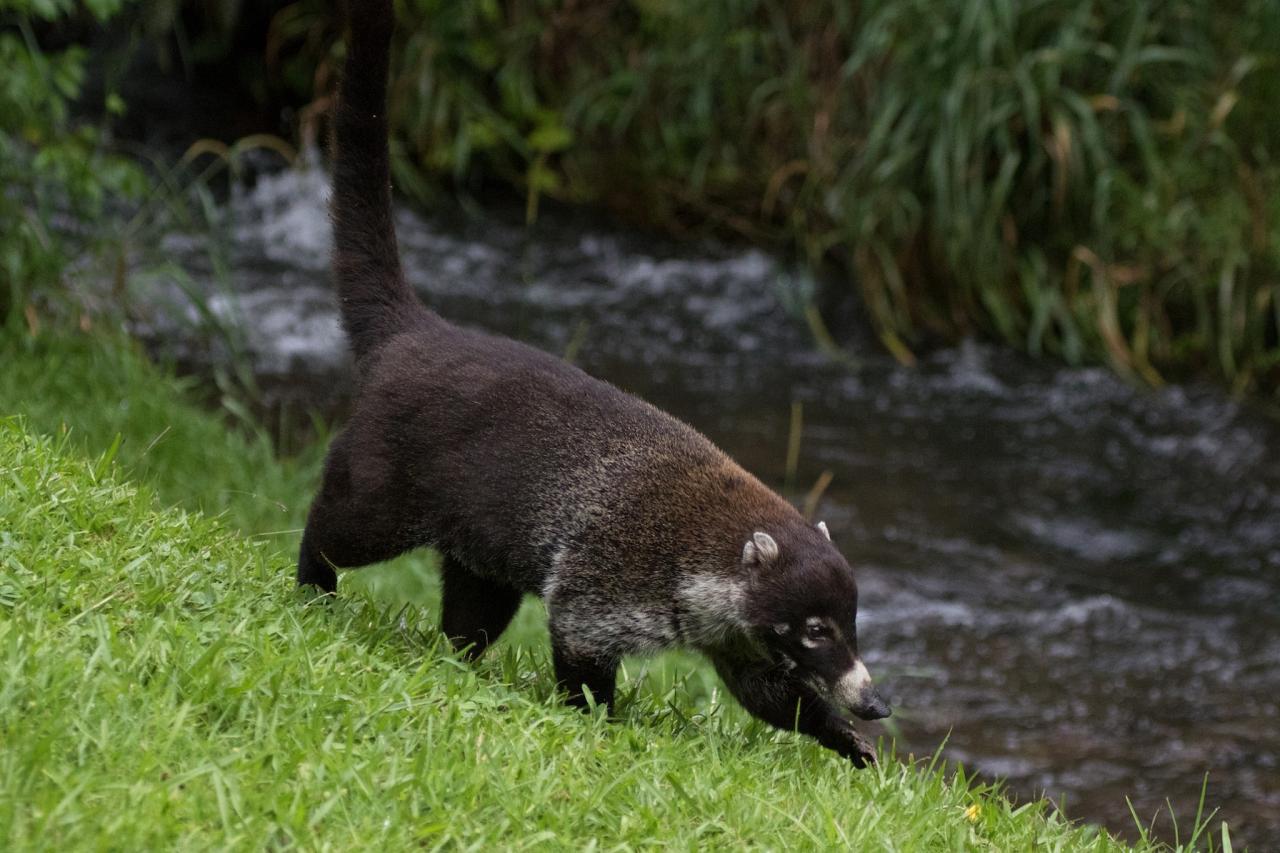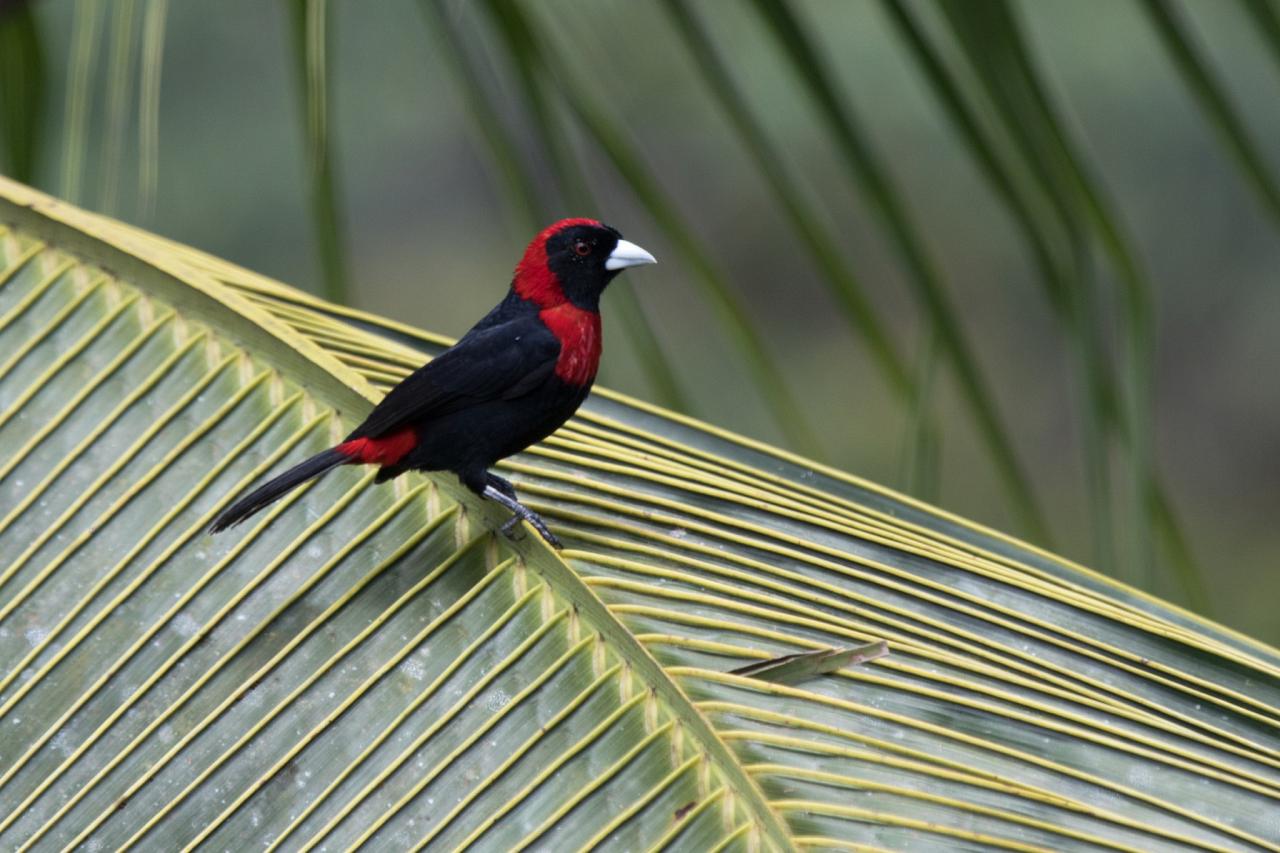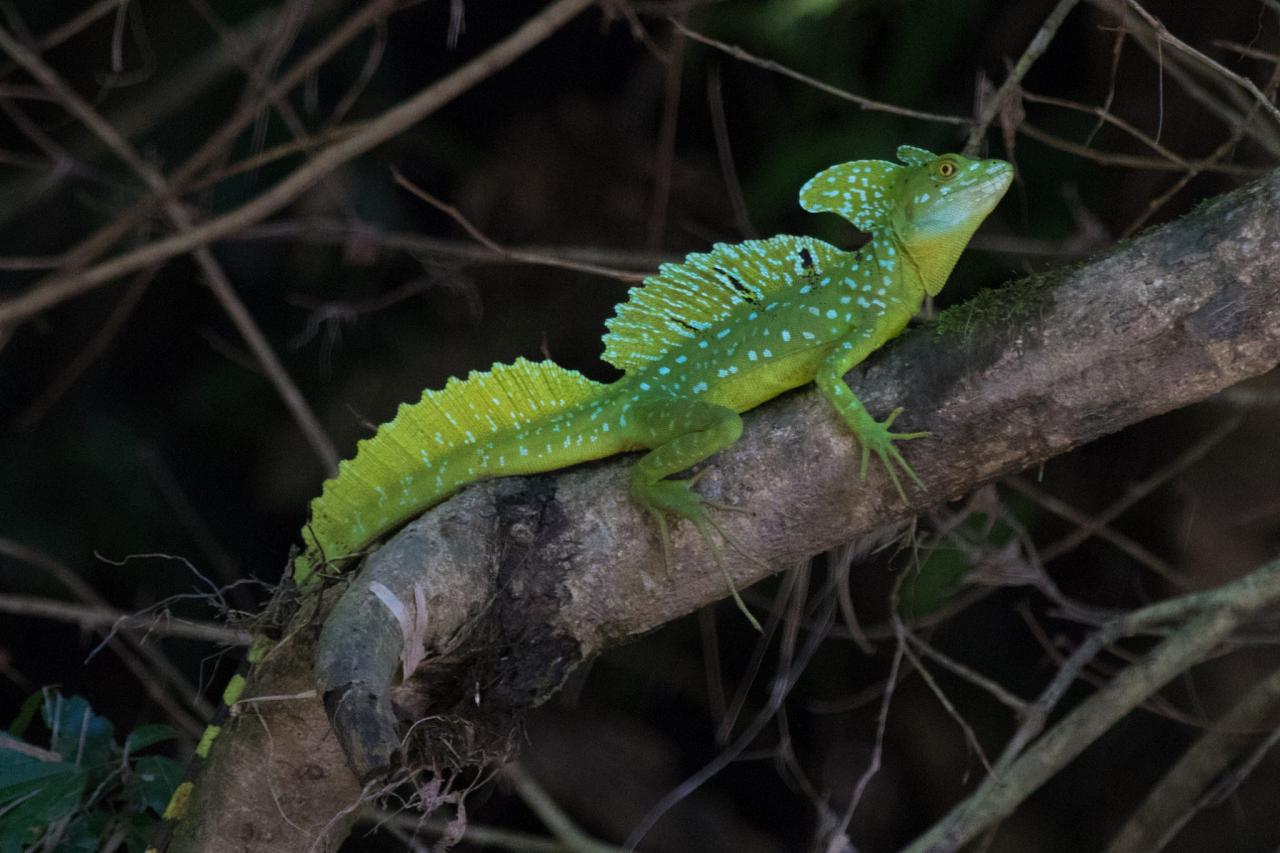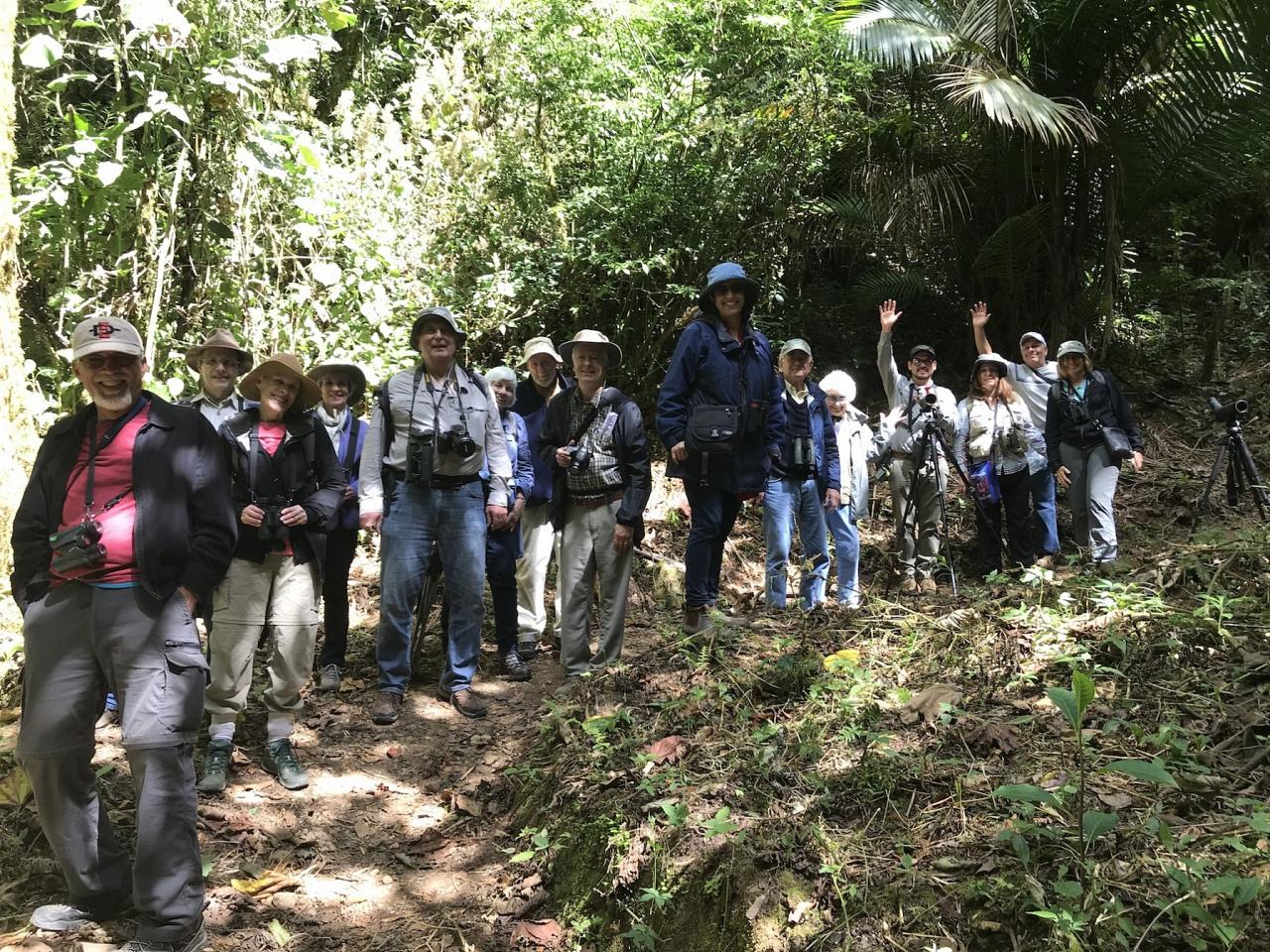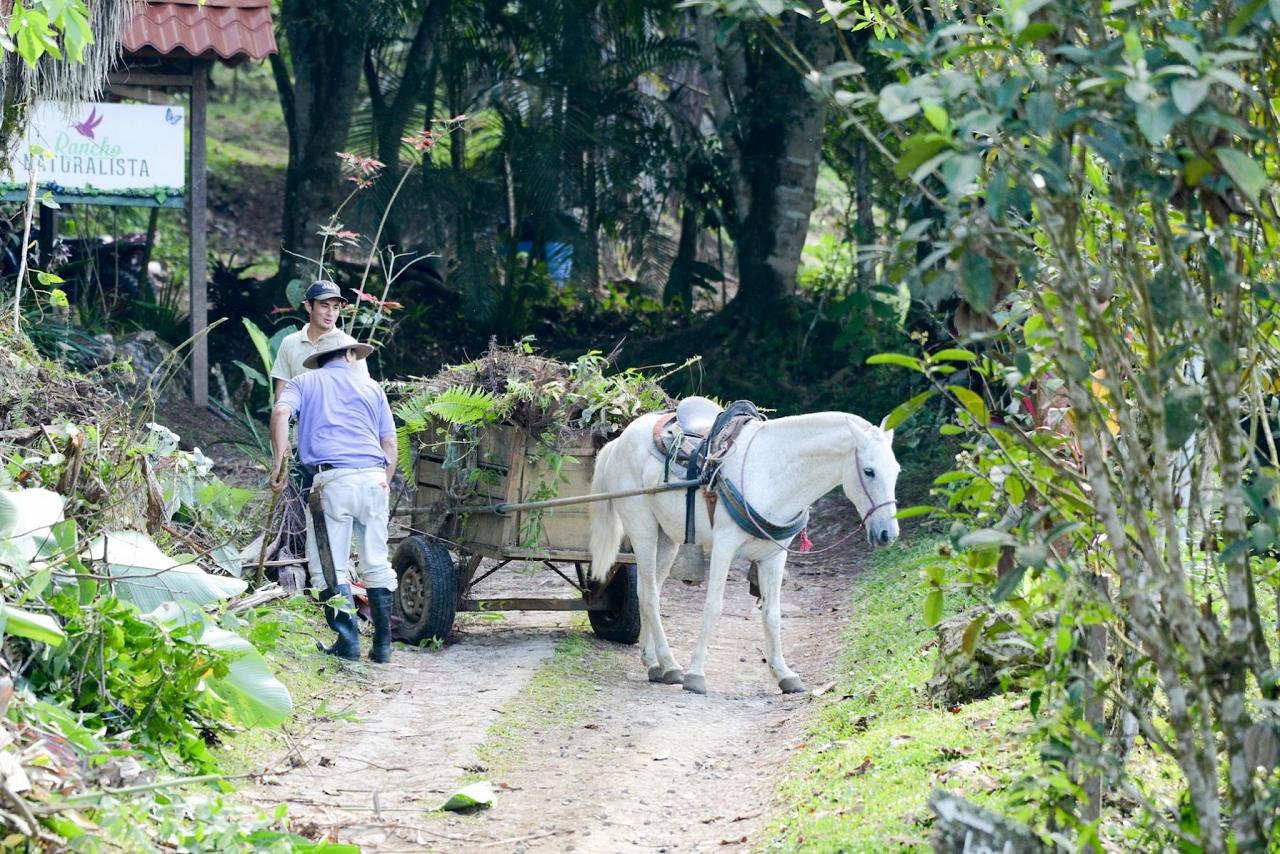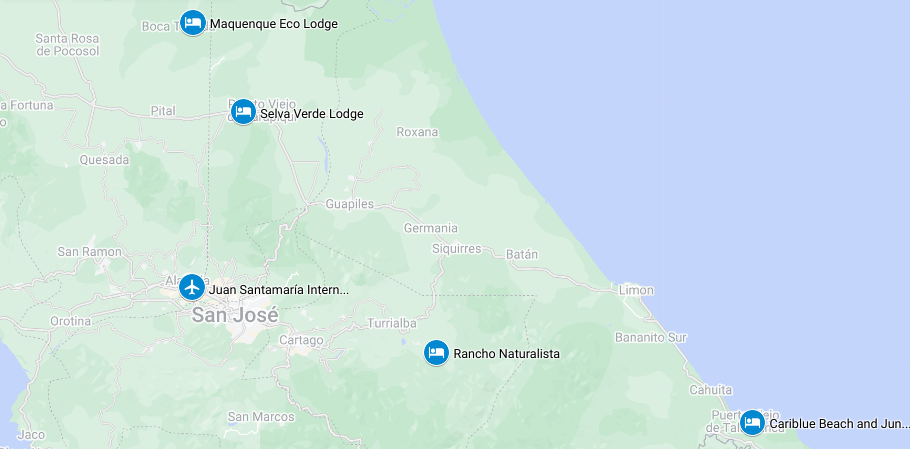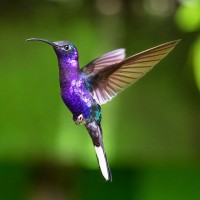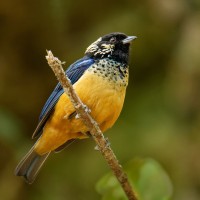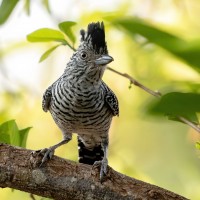- Overview
- Full Itinerary
- Photo Gallery
- Costing
- Travel Details
- Trip Reports
- Guide
- Map
- Know Before You Go
- Other Trips You May Like
Few places rival Costa Rica’s ecological diversity. Over a quarter of the country is a national park, wildlife refuge, biological reserve, or protected area. And for good reason: Costa Rica boasts 850 bird species, 208 mammal species, 50,000 insect species, and 2,000 orchids. Birding is excellent every month of the year.
October is a key migration time in Costa Rica. Scores of Broad-winged Hawk might pass over, while many North American songbirds are on the wing to South America, or settling into winter homes in Costa Rica’s mix of tropical to montane habitats. It is a great month for birding! And while raining to the west, it’s the best time to visit Costa Rica’s Caribbean side! This journey does just that, sampling rich biodiversity from the Nicaraguan to the Panama border with a final visit to the mountains at famed Rancho Naturalista.
We love this route, which starts at our favorite San José hotel, then moves to lodgings near the country’s northern border at Maquenque. Here we see both Scarlet and Great Green Macaws, Collared Aracari, and a host of other species. Photographers love the lodge feeders. We further explore the Caribbean lowlands moving south to lodgings at Selva Verde, adjacent to one the world’s best known research stations at La Selva. Continuing south we witness the spectacle of raptor migration at one of the best spots in Central America based from a lovely beach resort. Several of these lodges are new to past Naturalist Journeys’ Costa Rica travelers—we invite you to return! Along with superlative natural history moments, we have fun tasting local foods and perhaps visiting a market or local coffee shop; we also enjoy our Costa Rican hosts’ exceptional hospitality.
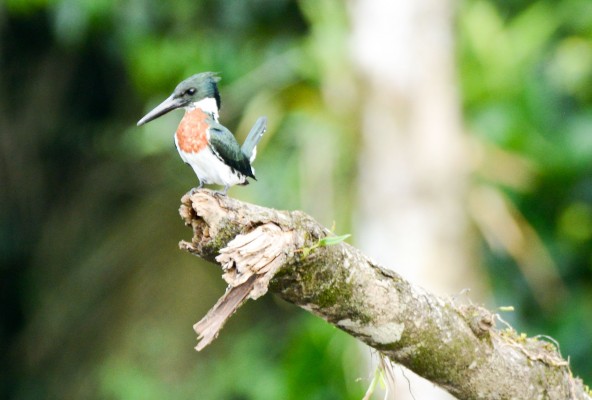
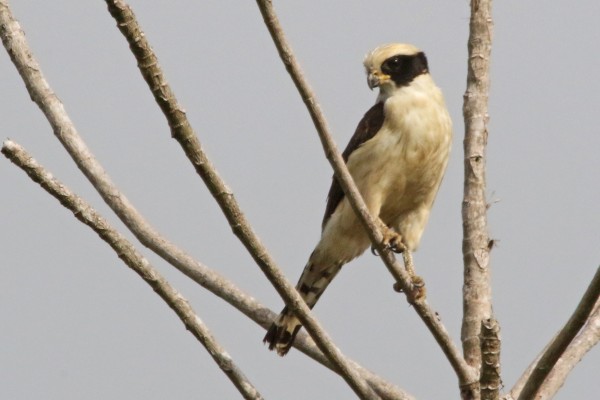
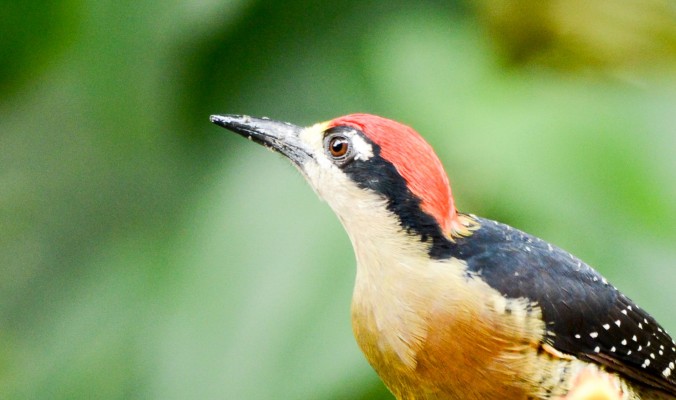
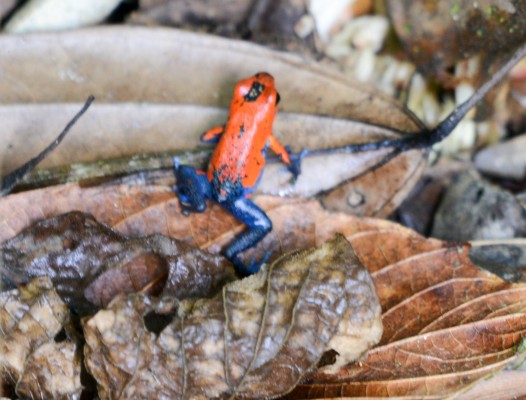
- "Our guide was absolutely outstanding. Extremely knowledgeable - great spotter!, kind, generous, funny. He knows the birds, the country, the field trips, the locations. He had many surprise destinations for us with beautiful scenery and lots of birds." — 2023 Traveler
- "The trip met my expectations exactly. I wanted to see lots of interesting birds and take some pictures, both of which I was able to do...It was extremely well organized and there were no logistical problems at all." — Jim Majure, 2023 Traveler
- "Magical - trip of a lifetime! An amazing exploration of beautiful places that one doesn't often hear about in CR. An abundance and diversity of birds and wildlife." — 2023 Traveler
- "Amazing! If I’d seen a fraction of the birds we saw I would’ve been thrilled..." — 2023 Traveler
- “Experienced Costa Rica from coast to coast. Had amazing guides having incredible knowledge of the birds, wildlife and fauna in Costa Rica. These guys were the best guides I’ve ever had in knowledge of birds, butterflies, habitats and general knowledge of Costa Rica. Also, they were very personable and caring to the participants.” — Caroline DePalma, 2023 Traveler
- “Superb - Birds, Bugs, Blooms, Butterflies and Best Guides! Hard to list all the highlights…Where would I start? The Great Potoo? The American Pygmy Kingfisher? The Three-Wattled Bell Bird? The Hummingbirds? The boat trips. The Eyelash Viper. The Bark Scorpion in our bathroom? How in the name of heavens did Johan and Robert find all those birds? Incredible guides! They kindly adjusted to the varied speeds and limitations of the group members. We were blessed.” — Janet Barrett, 2023 Traveler.
- “A varied and very enjoyable look at several different habitats in a country I knew little about before going there. I had three "target birds" - tiger heron, sun bittern, and swallow-tailed kite - and saw all three of them well. We had two excellent boat trips, on the Cano Negro wetlands and the Tarcoles River estuary. Saw great birds and other wildlife close-up.” — Adrienne Lovelock, 2023 Traveler
Tour Highlights
- Enjoy beautiful birds like Lesson’s Motmot in the incredibly birdy gardens right at our hotel in San José
- Spend three nights at Maquenque Eco-lodge, where we enjoy a boat safari, walk on the local trails, and immerse ourselves in Neotropical nature—birds abound!
- Stand mesmerized as Coatimundi, Collared Aracari, colorful tanagers, and perhaps a wood-rail or gallinule take turns at Maquenque’s feeders
- Find Green Ibis or possible Sunbittern on a calm-water boat trip on the Sarapiqui River
- Learn about the latest in Neotropical research on a guided walk at La Selva Biological Station
- Enjoy the perfect combination of nature and comfort at Cariblue Resort where jungle and beach collide
- Scan the skies in Costa Rica’s Southeast corner on a narrow strip of land rimming the rugged Talamanca Mountains, topography made for migrating raptors—the sheer quantity of birds here can be incredible
- Wind your way into the hills to spend two nights at the mid-montane site of Rancho Naturalista, a naturalist’s haven where hummingbirds abound, including the dainty Snowcap
- Watch birds from the veranda, walk forest trails, enjoy shared meals with your companions, tally up your bird and wildlife sightings
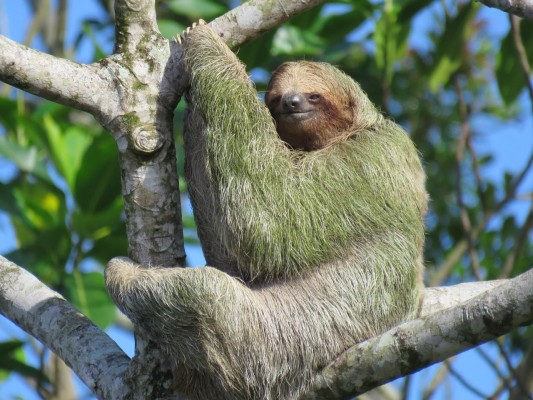
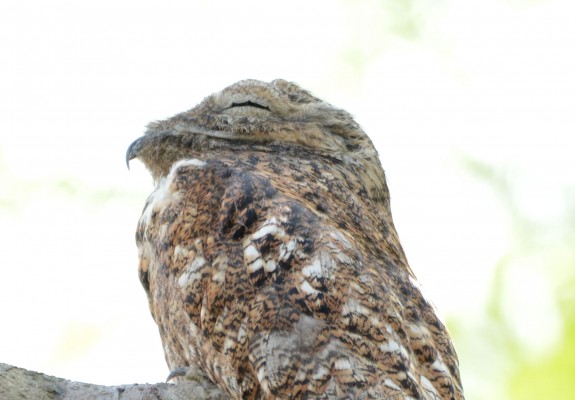
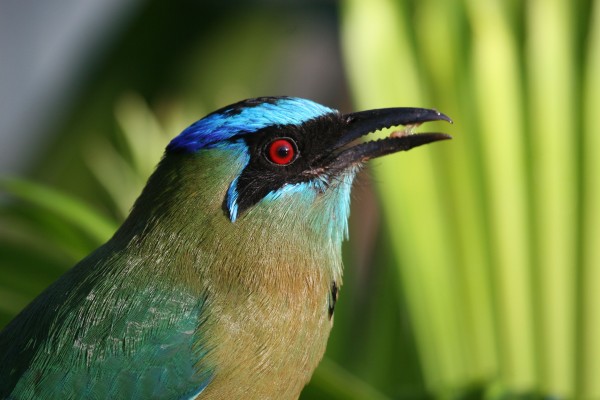
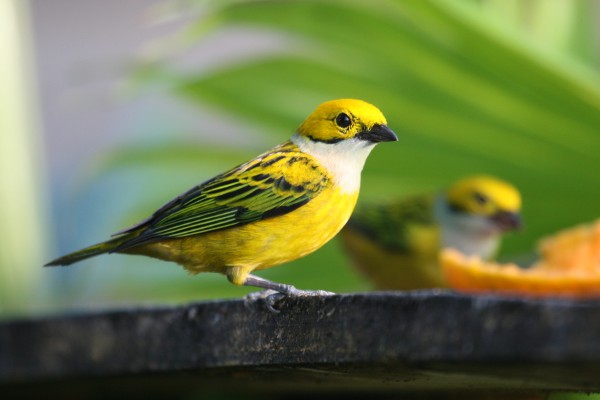
Trip Itinerary
Itineraries are guidelines; variations in itinerary may occur to account for weather, road conditions, closures, etc. and to maximize your experience.
Wed., Oct. 8 Arrival in San José
Welcome to Costa Rica! Arrive today in San José where you are met at the airport by a representative from our Costa Rican host company, for private transfer to the Hotel Bougainvillea. We select this boutique hotel for its spacious rooms, friendly service, and sculpture-rich birdy gardens, just outside the door. This is an environmentally-friendly hotel with a commitment to our planet and hospitality.
Those arriving in time can enjoy a welcome dinner with fellow travelling companions and your Naturalist Journeys guide. Those that arrive later than dinner have a snack tray on arrival.
Accommodations at Hotel Bougainvillea (D)
Thurs., Oct. 9 Travel to Maquenque | Cinchona Waterfall & Hummingbirds
Our early birds can be out in the garden at sunrise. After breakfast, we pack up and head out on a very scenic drive to Maquenque. Our first stop is at Cinchona where we enjoy a coffee and snack, and look off to a canyon, one of Costa Rica’s most important elevational corridors for birds, flora, and fauna. Enjoy the patio of Café Colobri and views of Violet Sabrewing, Purple-throated Mountain Gem, and possibly Green Thorntail. There should be colorful tanagers and some wintering warblers as well.
We can hardly tear ourselves away but we keep moving north. We pass through some lush agricultural areas and have lunch along the route. Our lodge is only accessible by boat, a short trip across the Rio San Carlos to an island. It lies adjacent to Maquenque National Wildlife Refuge and close to 600 bird species have been reported on the property!
Settle into your casitas and return to watch birds and mammals by the lagoon and feeders. As late-afternoon activity picks up we stroll around the pond and watch parrots and macaws return to their roost. Black-bellied Whistling Duck often decorate the trees like ornaments. This is a special place and we have three nights here to enjoy.
Accommodations at Maquenque Lodge (B,L,D)
Fri., Oct. 10 & Sat., Oct. 11 Maquenque Lodge
The next two days we follow nature’s rhythm. On morning walks we may be greeted by calling Keel-billed Toucan or even Broad-billed Motmot. Learn more about local fruiting trees and seasons of the tropics. After a walk and breakfast, we check out the grounds in search of Mantled Howler Monkey, Green Iguana, and Spectacled Caiman. Birds are plentiful, we might spend a full morning just in the gardens!
Over the next two days, from the lodge, we scan the skies for raptors on the wing, including Broad-winged, Swainson’s, and Short-tailed Hawks, and bird the grounds and surrounding forest. With the company of our local guide, we enjoy a boat safari on the San Carlos River.
In the afternoons, we walk on the lodge trails, where we might find Great Curassow, Great Green Macaw, Green Ibis, and Golden-hooded Tanager. It’s wonderful to have these full days to immerse ourselves in migration, the resident birds, and the tropical nature of Maquenque! Here we enjoy creature comforts, the beauty of nature in a remote location, and some fabulous birding and wildlife.
Accommodations at Maquenque Lodge (B,L,D)
Sun., Oct. 12 Sarapiqui | Tropical Night Walk
Enjoy a final early morning with the dawn chorus from your casitas. We then pack up and head to another biological hotspot, the Sarapiqui Region, famous for its lush lowland tropical forest.
We continue on, enjoy lunch along the way, and then get settled in at our hotel, which lies adjacent to a famous tropical research station. Nature is all around us, and those that wish can venture out on a night walk in search of owls and other night creatures.
Accommodations at Selva Verde (B,L,D)
Mon., Oct. 13 La Selva Biological Station | Sarapiqui River Boat Tour
The La Selva Biological Station is one of the premier tropical research stations in the world. Trails wind between laboratories and researchers’ residences, and then fan out to primary and secondary forests where nature abounds. Lowland rainforest is particularly diverse here, as the property is located near the confluence of two major rivers?the Rio Puerto Viejo and the Sarapiqui. The reserve is nearly 4,000 acres and connects to a forest corridor that ascends up through nearby Braulio Carrillo National Park, providing links to middle and higher elevations.
La Selva comprises 1,600 hectares (3,900 acres) of tropical wet forests and disturbed lands. Four major tropical life zones define the contiguous corridor now protecting a large portion of Costa Rica’s biodiversity. Recorded here are more than half of Costa Rica’s almost 900 species of birds, 1850 species of vascular plants, and a rich array of mammals, insects, reptiles, and amphibians. Each year, La Selva’s Christmas Bird Count is among the highest in numbers.
On trails near the Sarapiqui River we hope to see the beautiful Agami Heron and perhaps an elusive Sungrebe. Some of the other elusive species we may find include Great Curassow, Great or Slaty-breasted Tinamous, Great Potoo, and possibly Bare-necked Umbrellabird. We should see Crimson-collared and Golden-hooded Tanagers, Rufous Motmot, endemic Black-cheeked Woodpecker, beautiful Snowy Cotinga, and, high on thermals above, King Vulture. Pied Puffbird and Great Jacamar are sit-and-wait predators that dart from perches to capture large insects. Orange-billed Sparrow are gaudy denizens of the forest floor.
Butterfly enthusiasts, prepare to be amazed at all the species, including several large electric-blue Morphos. Central American Agouti and White-nosed Coati are mammals we often find.
In the late afternoon, we venture out on the Sarapiqui River for a boat trip; late afternoon is a great time to find secretive birds like Sunbittern, Green Ibis, Fasciated Tiger-Heron, several kingfishers, herons, and egrets. Yellow-naped and White-crowned Parrots make raucous noise overhead, joined by the smaller Olive-throated Parakeet. It’s beautiful to be out on the water where the temperature is cool and views of the mountains are spectacular.
Accommodations at Selva Verde (B,L,D)
Tues., Oct. 14 & Wed., Oct. 15 Jungle & Ocean | Migrating Raptors | Puerto Viejo
Few venture down to Costa Rica’s southeast corner, where a narrow strip of land lies between the rugged Talamanca Mountain Range and the Caribbean Sea. After leaving the lush lowland rainforest, we turn south at Limon and follow the coast for the rest of our route today. Black-chested Jay and Sulphur-rumped Tanager are specialties for the country here, as is Whistling Wren. An hour south to the Panama border near Sixaola a few more specialties occur, such as Spot-crowned Antbird.
This is a rich area, with large tracts of a mix of primary and second-growth forests that are home to numerous species. Bay Wren, Montezuma Oropendola, Squirrel Cuckoo, Masked Tityra, and possibly Cinnamon Woodpecker are vocal and often steal the show. We also look for Rufous-winged Tanager, Tawny-crested Tanager, and both Green and Shining Honeycreepers. Our eyes roam to the sky, and for those fit to hike there is an excellent opportunity to reach a hawk-viewing site where kettles of migrating Broad-winged Hawk, possible Swainson’s Hawk, and Turkey Vulture can fill the sky. Resident White Hawk and Semiplumbeous Hawk occur here as well.
We make time for you to enjoy the beach, and catch the vibe of a different culture here—this part of Costa Rica is decidedly Caribbean. We enjoy that influence in our dining as well.
Accommodations at Cariblue Beach and Jungle Resort (B,L,D)
Thurs., Oct. 16 Coastal Scenic Drive | Turrialba | Rancho Naturalista
After breakfast, we retrace our route along the coast, stopping at a few birding spots along the way. The morning is spent largely in travel. Our stops are guide’s choice based on what at this point in our trip we still hope to see.
We enjoy lunch at a restaurant along our travel route and by late afternoon check into the lodge. We enjoy birding from the veranda after settling in. This is a delight?particularly for those that fancy close-up views of hummingbirds. A number of mid-elevation Caribbean-side specialties can be found here, including Black-crested Coquette, Snowcap, Green Thorntail, and Bronze-tailed Plumeleteer. Temperatures are cooler at a comfortable 3000 feet. At day’s end, we are likely to see both Keel-billed and Yellow-throated Toucans coming in to roost. Enjoy dinner and time to tally up our sightings in the cozy lodge dining area.
Accommodations at Rancho Naturalista (B,L,D)
Fri., Oct. 17 Birding Mid-Montane Forests | Rancho Naturalista Grounds
Wake up and bird from the balcony where, with luck, a mixed group of colorful tanagers may be at work on bananas at the feeders. We can hope for Scarlet-rumped, Speckled, Bay-headed, Silver-throated, and Emerald. White-necked Jacobin are regulars, and a special treat is the tiny Black-crested Coquette. Lesson’s Motmot and Golden-olive Woodpecker are yard birds—imagine! Indeed, over 200 species have been seen from this balcony. Linger as we may, trails and exploring calls.
Though small (125 acres), the reserve has a nice mix of habitats. Open crowns of Cecropia trees afford us good looks at colorful species like Scarlet-thighed Dacnis, Squirrel Cuckoo, and Yellow-throated Euphonia. White-ruffed Manakin and Thicket Antpitta call frequently, alerting us to their presence along the trails. One of the trails leads us to hummingbird feeders set up in the forest. Here we often find the stunning Snowcap alongside colorful Crowned Woodnymph, Rufous-tailed Hummingbird, and Green Hermit.
Another lovely home-cooked meal and then we share a gracious evening recounting our trip highlights and doing a final checklist of our species. The time passes so quickly!
Accommodations at Rancho Naturalista (B,L,D)
Sat., Oct. 18 Departures
After breakfast, we offer a group transfer to San José’s Juan Santamaria International Airport to catch your flights back home. Keep in mind that driving time from the lodge to the airport is nearly two hours, and you should be at the airport almost three hours ahead of your flight, so you cannot make those early-morning departures! If you must leave early we can arrange a private transfer for you (additional cost). Otherwise, plan on flights out after 1:00 PM. (B)
Cost of the Journey
Cost of the journey is per person, based on occupancy: $4990 DBL / $5585 SGL, from San José, Costa Rica.
This cost includes: all accommodations, meals as specified in the itinerary, professional guide services, other park and program entrance fees, and miscellaneous program expenses.
This cost does not include: round-trip transportation from your home city to San José, optional activities, or items of a personal nature such as laundry, telephone charges, maid gratuities, or beverages from the bar.
Travel Details
Please plan to make air travel plans only after the minimum group size has been met. We will send you a confirmation email as soon as the trip has been confirmed.
Arrival and Departure Airport: Juan Santamaria International Airport (SJO) in San Jose
Arrival Details: Plan to arrive October 8, no later than 5:00 PM if you wish to join the group for dinner
Departure Details: Plan flight departures on October 18, after 1:00 PM If you would prefer to overnight in San Jose for a morning departure on October 19, there are some airport hotel recommendations below.
Travel Tips: If you arrive early to rest up from your travels, we can book extra nights for you with a transfer to our hotel, the Hotel Bougainvillea, which is in a residential area of the city. If you prefer to stay downtown and see the city, we have a few hotel recommendations below. If you choose to stay downtown, you’ll need to arrange a taxi or driver with the hotel to return to the airport for pickup or go out to the Bougainvillea to enjoy its gardens on the tour start date. There are many things to see in San Jose if you’re up for exploring! If you enjoy museums, you’re in luck because some of the best in Costa Rica are located right in San Jose. The Museo Nacional de Costa Rica has exhibits highlighting the archaeology and history of Costa Rica as well as a butterfly garden. The Pre-Columbian Gold Museum has one of the largest collections of gold artifacts in Latin America, some of which date back to 500 CE. If you’re looking to do some shopping or try some local food, head over to the Mercado Central (Central Market). You’ll find vendors selling fruits and vegetables, local food dishes, and a wide variety of souvenirs.
Downtown Hotel Recommendations: Hotel Presidente Hotel Grano de Oro
Airport Hotel Recommendations: Doubletree by Hilton Hotel Cariari San Jose
Entry Requirements: See "Essential Information" section under the "Know Before You Go" tab.
Browse below for trip reports and species lists from past versions of this and other tours from this destination.
Costa Rica
- January 2018
- October 2018
- January 2019
- March 2019
- January 2020
- March 2021
- December 2021 (Christmas in Costa Rica)
- February 2022
- March 2022
- December 2022
- January 2023
- February 2023
- July 2023
- October 2023
- December 2023 (Christmas Tour)
- January 2024
- February 2024
- July 2024
- October 2024
- January 2025
- February 2025 (Arenal Volcano)
- March 2025
Monteverde
- March 2022
- March 2023
- March 2024
- March 2025
Northern
- March 2012
- January 2013
- January 2017
Southern
- February 2007
- January 2017
- January 2018
- January 2019
- February 2023
-
Sharon Goldwasser

Sharon became an avid birder and naturalist while a student at UC-Santa Cruz. After working as a field biologist for several years, she moved to Tucson for graduate school in ecology where she studied song mimicry by Lesser Goldfinches. In 1987, she rerouted her career into education, bringing her love of science to thousands of middle school students. Since retiring from the classroom in 2020, she has renewed her birding passion and is excited to share knowledge of birds and ecology with tour participants.
Other trips with Sharon Goldwasser
-
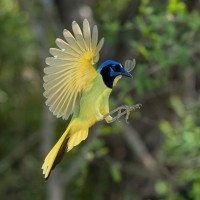 South Texas Birding & NatureJanuary 21 - 29, 2026
South Texas Birding & NatureJanuary 21 - 29, 2026 -
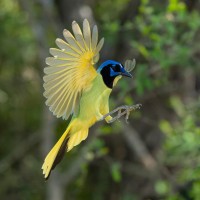 South Texas Birding & NatureMarch 11 - 19, 2026
South Texas Birding & NatureMarch 11 - 19, 2026 -
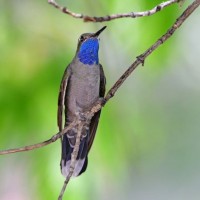 Southeast ArizonaMay 2 - 11, 2026
Southeast ArizonaMay 2 - 11, 2026 -
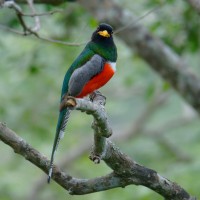 Arizona Monsoon Madness: Birding & Nature in a Season of Wonder!August 4 - 11, 2026
Arizona Monsoon Madness: Birding & Nature in a Season of Wonder!August 4 - 11, 2026
-
Essential Information +
Pace & Protocols +
Packing List +
Suggested Reading List +
Useful Links +
Photo credits: Banner: Broad-winged Hawk by Peg Abbott; White-neckd Jacobins by Sandy Sorkin; Red-eyed Tree Frog by Greg Smith; Resplendent Quetzal by Greg Smith; Green Violetear, Naturalist Journeys Stock; Amazon Kingfisher by Sandy Sorkin; Laughing Falcon by Peg Abbott; Black-cheeked Woodpecker by Sandy Sorkin; Blue Jeans Frog by Sandy Sorkin; Three-toed Sloth by Howard Topoff; Great Potoo by Sandy Sorkin; Lesson's Motmot by Peg Abbott; Silver-throated Tanager by Peg Abbott; Black Howler Monkey by Peg Abbott; Silver-throated Tanager by Greg Smith; Keel-billed Toucan by Doug Greenberg; Maquenque Lodge, courtesy the lodge; Great Curassow Pair by Sandy Sorkin; Eyelash Pit Viper by Sandy Sorkin; Resplendent Quetzal by Greg Smith; Bay-headed Tanager by Peg Abbott; Aerial Tram by Peg Abbott; Agouti by Peg Abbott; American Crocodile by Peg Abbott; Bare-throated Tiger-Heron by Peg Abbott; Black Guan by Peg Abbott; Bromeliads by Peg Abbott; Coatimundi by Peg Abbott; Crimson-collared Tanager by Peg Abbott; Emerald Basilisk by Peg Abbott; Great Green Macaw by Peg Abbott; Group by Carlos Sanchez; Horse and Cart by Sandy Sorkin.





